In these same pine forests where the stadium is located, the maritime pines grew that have been used to make the laminated wood structure of the new stadium buildings. Wood is used in structural applications and cladding due to its quality as a bio-based material and its ability to trap large amounts of C02. All facades are covered with burned wood using an ancient Japanese technique rooted in respect for both man and nature.
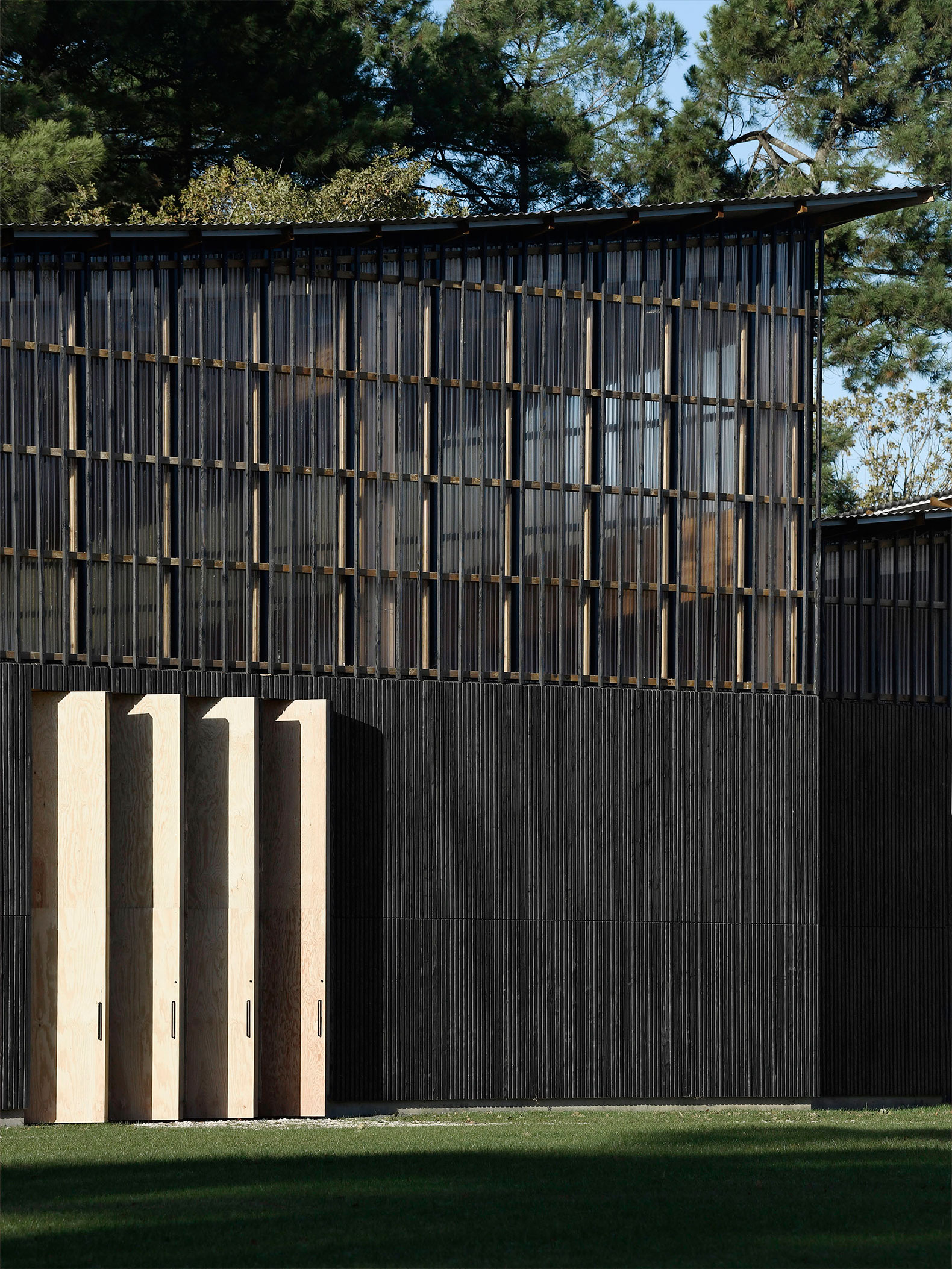
Pierre-Paul Bernard Stadium by K Architectures. Photograph by G-AMAT.
Project description by K Architectures
Inaugurated in 1976, Talence’s Pierre-Paul Bernard stadium was built in the heart of the Thouars woods. This location offers an exceptionally wild environment. The site is mainly dedicated to athletics, and hosts national and international events, notably the Décastar, which has been part of the IAAF (World Athletics) world challenge in combined events since 1998. Kevin Mayer set the decathlon world record here in 2018. Since then, the site has become an essential step for world-class athletes, as well as Bordeaux’s biggest annual sporting event, attracting over 15,000 spectators.
In March 2020, the Décastar received the Heritage plaque from World Athletics at the Pierre-Paul Bernard stadium. This award celebrates the unique contribution of this international meeting tothe history and development of athletics worldwide.
In 2016, the "Bordeaux Métropole" community of municipalities appointed K Architectures to renovate the stadium’s track and grandstands, as well as to build a maintenance division and, above all, a new sport complex housing indoor practice halls, a dojo, a weight room, an administrative division and spaces of conviviality.
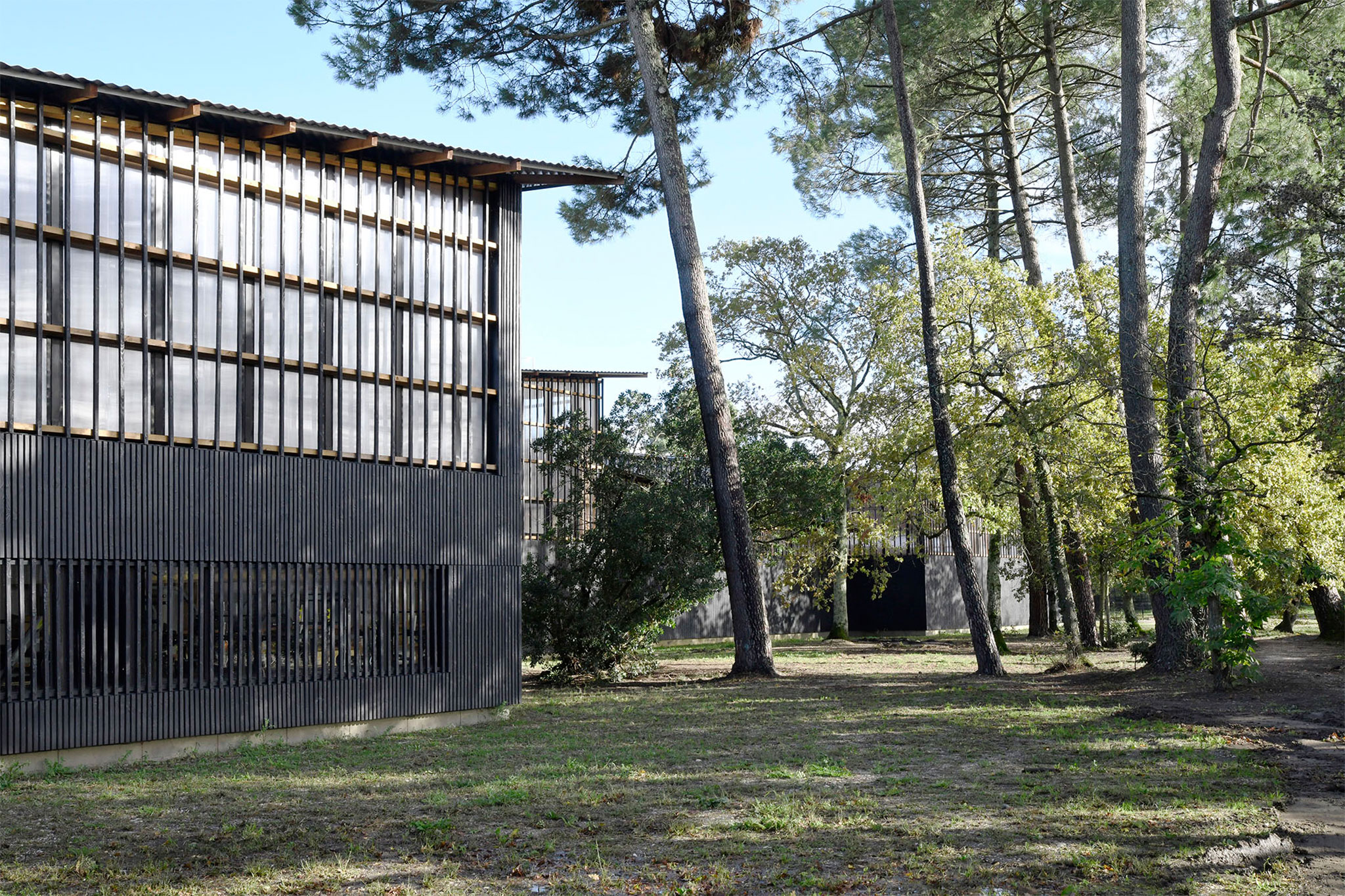
Pierre-Paul Bernard Stadium by K Architectures. Photograph by G-AMAT.
Challenge
The Thouars communal wood is a natural monument in the city. To build an additional 4,000 m² without removing a single tree appeared magical. Here was the eternal and infinitely current dilemma: "Can we sacrifice a living cathedra! to make way for an artificial chapel? And, even if grassed glades had long been reclaimed from natural biotopes, what form could this program take across the landscape when it required shed-sized buildings?"
For Karine Herman and Jérôme Sigwalt, Thouars Wood is a living myth. It’s the representation of a utopia, that of a rustic ideal where mankind has regained the ability to live in symbiosis with the rest of the living world.
The project imagines a forest narrative in which architecture is written, mimetically and minimally, by slipping between the trees.
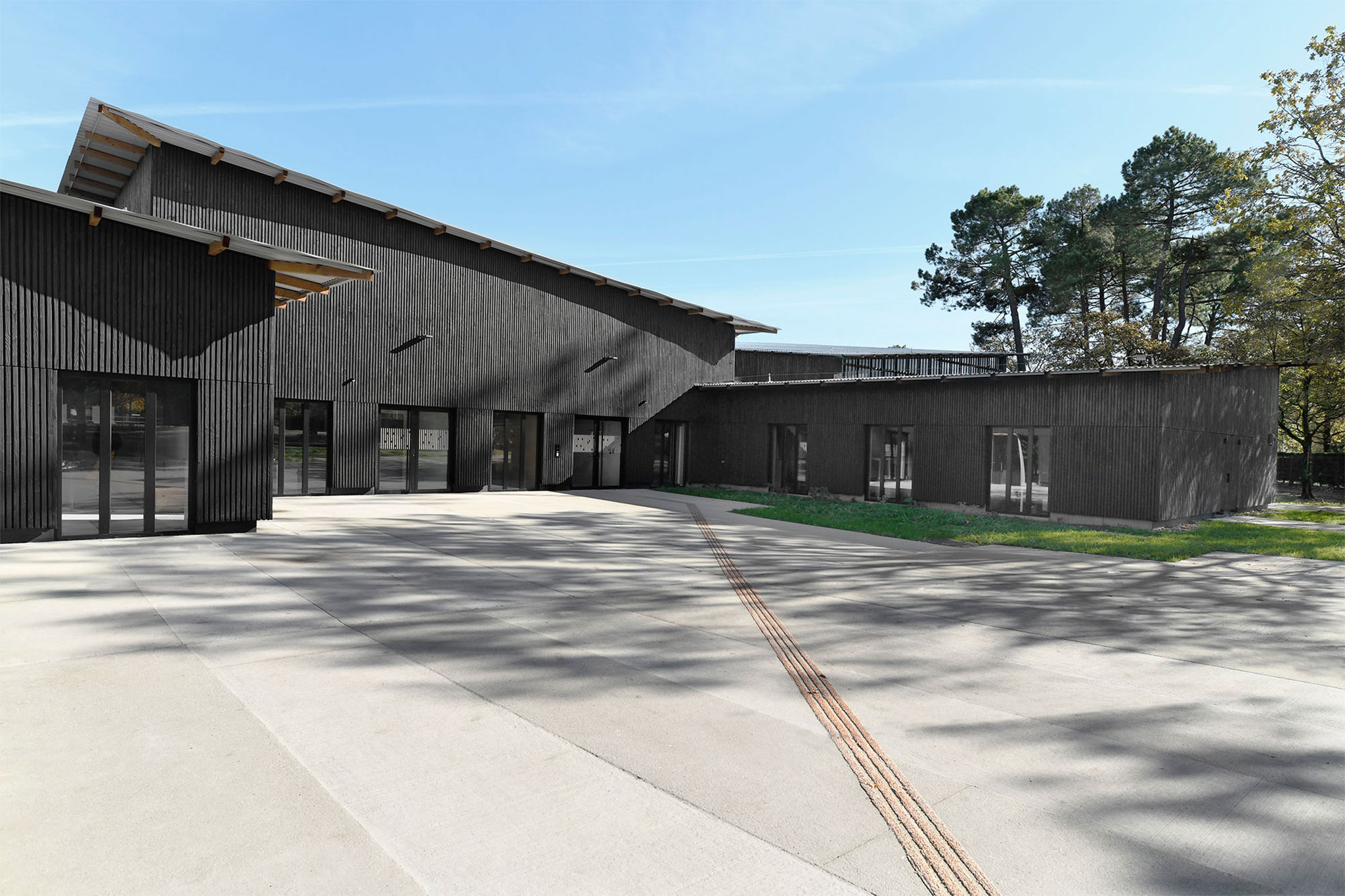
Pierre-Paul Bernard Stadium by K Architectures. Photograph by G-AMAT.
The program’s vast halls were imagined as a hamlet of rudimentary barns. The volumes have been fragmented and divided by redents, both in plan and profile, to reduce the sense of mass. Their facades are made of darkened wooden battens, as if immersed in the shadow of the canopy. Roofs are reduced to a thin, modest corrugated metal sheet, evoking sheets of mist. The authors like to encapsulate their concept in this synopsis,
"We imagined a mist
at the edge of the woods
Then, incidentally, a building
underneath
Which was like their shadow".
Or, as you prefer, with this haiku,
"Clouds of mist
At the musky edge of the wood
Shadows slip in".
The simplicity and minimization of superfluous elements of these constructions underline a pared-down lifestyle, emphasizing the essential. It is a project that speaks of serenity, in the presence of nature, with which it seeks to reconcile itself - and in the presence of athletes - to offer them peace of mind.
This architecture is also a continuation of local history, of the «Girolle», the popular house designed by the "École Bordelaise" in the 60s. The lightness of its roofs, their wide overhangs, the play of transparencies, the invitation of natural light as well as the invitation of the landscape itself, the constructive sincerity assumed as well as the use of wood as an architectural material are all common qualities with this little house often found in the sandy pinewoods of the region.
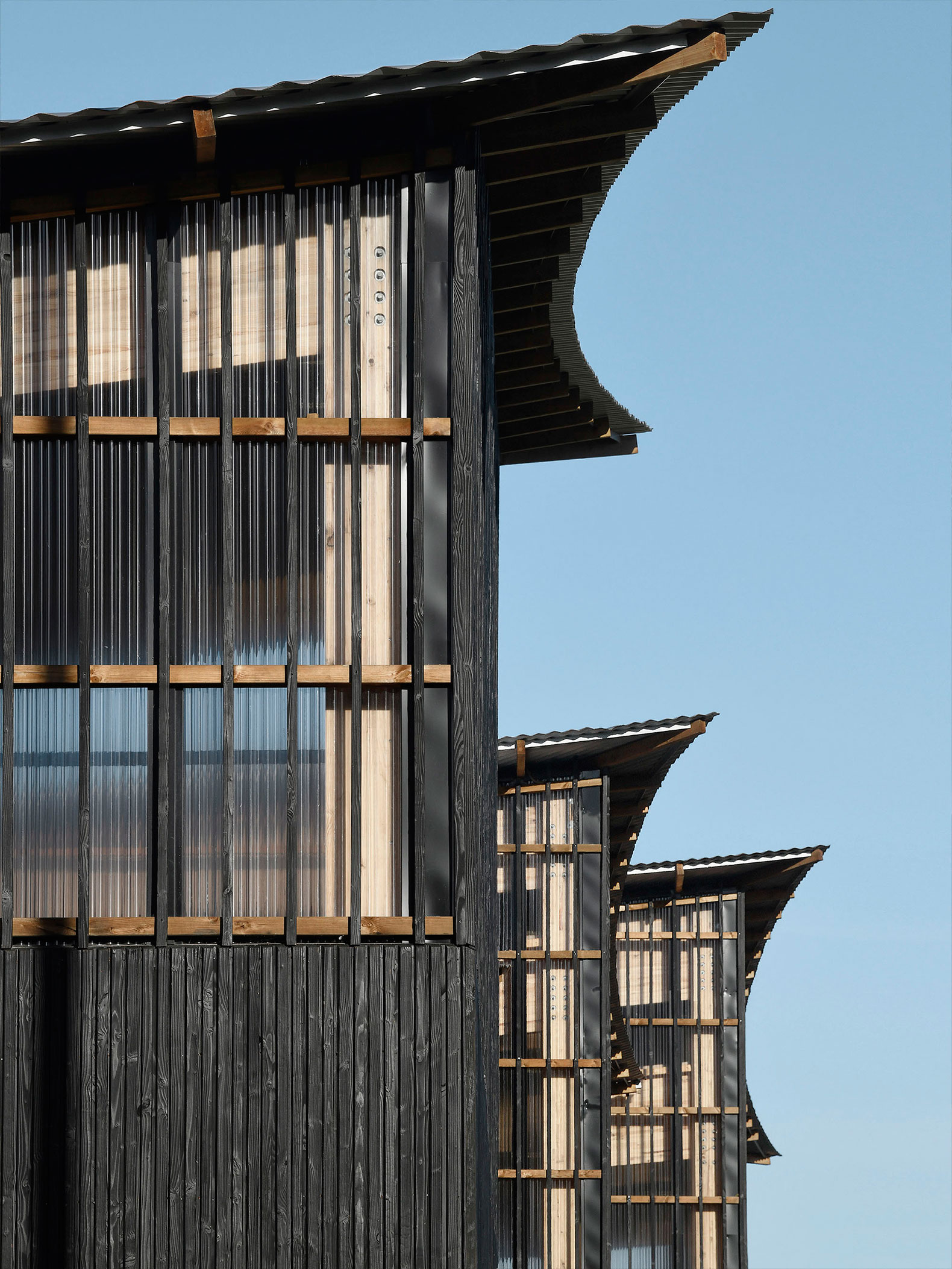
Pierre-Paul Bernard Stadium by K Architectures. Photograph by G-AMAT.
In tact, to bring the story into context, it was these same pine forests that grew the maritime pines used to make the glulam framework for the stadium’s new buildings. Wood is widely used for structural and cladding applications for two reasons. The first is its quality as a bio-sourced material and its ability to trap large quantities of C02.
"This edifice traps nearly 1,000 tons of C02"
The second, more subjective, lies in its cultural capacity to convey a soft, natural image linked to the values defended by the project. But this subjectivity is not total, interestingly, biologists have measured the biophylic effect of wood and found a 10% increase in well-being in architectures dominated by its presence.
All facades are clad in the "shadow" of burnt wood cladding inspired by the Japanese technique of Yakisugi, literally "burnt cedar". This is an ancestral practice rooted in respect for both man and nature. It is obtained by deeply burning the surface of the wood. It is both practical and symbolic. Naturally treated in this way, the material becomes more resistant to fire, insects and fungi.
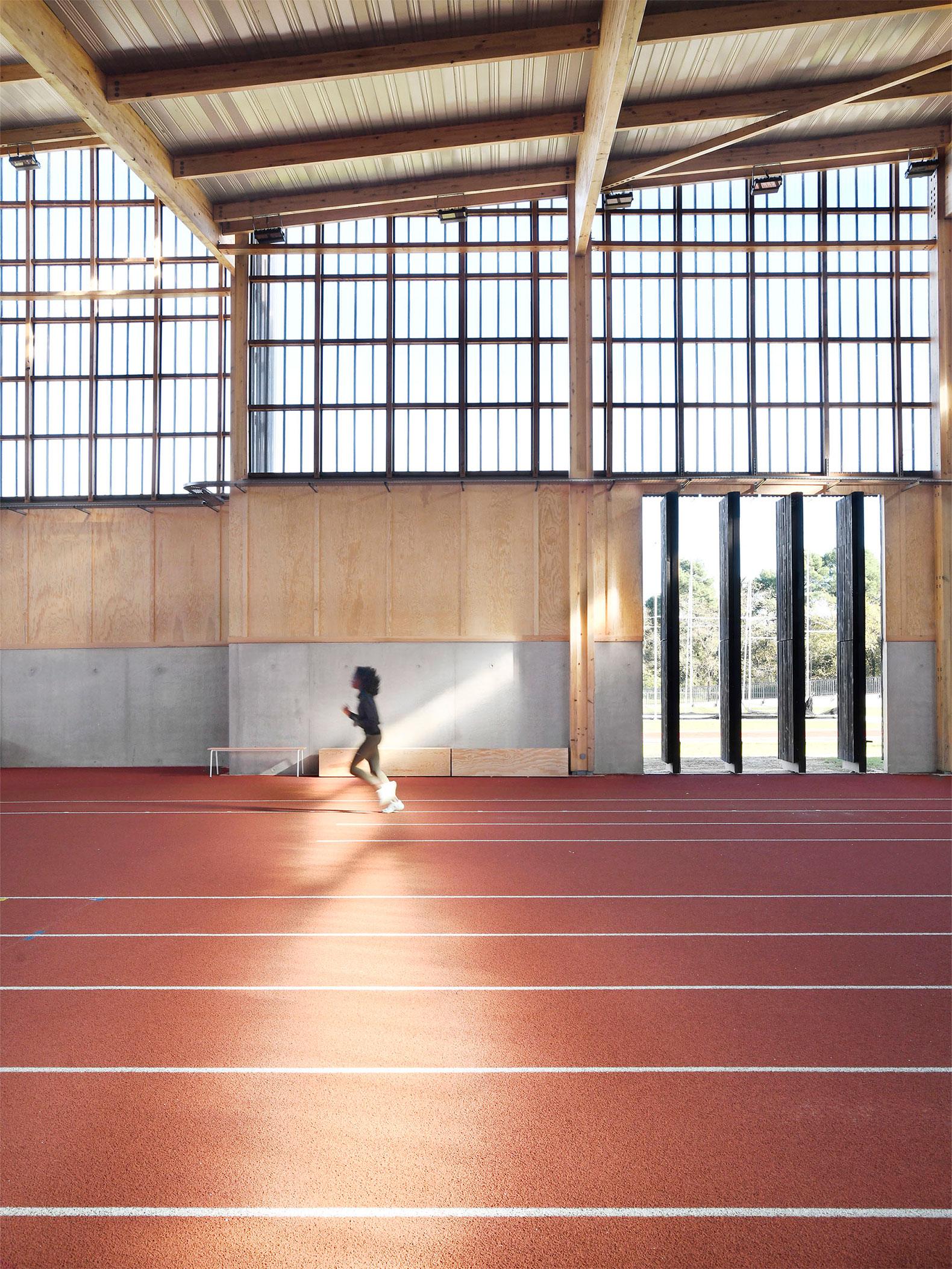
Pierre-Paul Bernard Stadium by K Architectures. Photograph by G-AMAT.
The gardeners’ pavilion
This small shed provides shelter for gardeners and their equipment at the edge of the woods. lt’s a satellite of the Halles. lt shares its architectural language.
The South Bend
The southern bendshelters the storage premises on which the white barnum village welcoming DECASTAR VIPs is set up. Each year. A palisade made of sloping burnt slats protects a gallery serving the storage areas, and forms a substructure that continues the general architectural theme now characterizing the site.
The grandstand
This construction, built in the ‘70s, was renovated without changing its appearance. Only the base, piers and facades overlooking the forecourt were given a dark tint to make it more stealthy and more in tune with the new buildings. The belly of the building, containing the changing rooms, was completely restructured in a sandy monochrome.















































